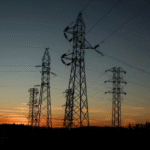Energy News Beat
The U.S. Environmental Protection Agency (EPA) in May 2023 published a proposed rule that would establish new source performance standards (NSPS) and existing source performance standards (ESPS) for greenhouse gas (GHG) emissions from new, modified, reconstructed, and existing fossil-fuel fired electric generating units (EGUs).
The proposed rule, which EPA plans to promulgate pursuant to section 111 of the Clean Air Act (CAA), would replace the Affordable Clean Energy (ACE) Rule, which EPA proposes to repeal.
Carter Clements
The emission reduction requirements included in the proposed rule would be achieved through performance standards and emission guidelines based on EPA’s predictions regarding the future availability and capacity of various systems of emission reduction, including carbon capture and sequestration (CCS) and hydrogen co-firing. EGUs would be required to meet these standards in phases between 2024, when a final rule is expected, and 2038. The proposed standards include the following:
New and reconstructed fossil-fuel fired stationary combustion turbines (primarily new natural gas-fired units) would be subject to updated NSPS for GHG emissions based on the capacity of the unit and the function it serves, with NSPS for new natural gas units based on the use of highly efficient generating practices and lower emitting fuels. Beginning in 2032, these requirements would include hydrogen co-firing, as well as CCS for higher capacity and baseload units.
Large and frequently used existing fossil fuel-fired stationary combustion turbines (primarily existing natural gas turbines larger than 300 MW with a capacity factor of greater than 50%) would be subject to emission guidelines based on either 90% capture of carbon dioxide (CO2) using CCS by 2035, or co-firing of 30% by volume low-GHG (also referred to as “green”) hydrogen beginning in 2032, and co-firing 96% by volume low-GHG hydrogen beginning in 2038.
Existing fossil fuel-fired steam generating EGUs (primarily existing coal units) would be subject to new emission guidelines starting in 2030, with the applicable standard determined by the unit’s federally-enforceable retirement date. Beginning in 2030, units retiring before 2032, and units retiring between 2032 and 2035 that commit to operate with an annual capacity factor limit of 20%, would be prohibited from increasing CO2 emission rates. Units retiring between 2032 and 2040 would be required to reduce CO2 emissions by 16% based on co-firing natural gas. Units retiring after 2040 would be required to reduce CO2 emissions by 88.4% based on CCS with 90% recapture.
Modified coal-fired units would be subject to an 88.4% reduction in CO2 emissions, based on implementation of CCS with 90% recapture, required immediately. (The proposed rule states that it does not include any revisions to EPA’s earlier new performance standards for new or reconstructed coal-fired EGUs because EPA does not anticipate construction of any such units.)
Although EPA does not propose to establish emission trading programs associated with the new GHG standards, it suggests that states may establish trading programs to ease the impact of the rule. EPA also says that states may ease the impact of the rule by setting mass-based emission limitations, to allow the CO2 reduction requirements to be met by reduced utilization. EPA will hold a virtual public hearing on the proposed rule on June 13 and 14, 2023, and has announced a 60-day public comment period on the proposed rule, ending July 24, 2023. A final rule is expected by summer 2024.
Petitions for judicial review of the final rule may be filed within 60 days after its publication in the Federal Register. Based on recent trade press articles, the rule is expected to face widespread legal challenges in the circuit court for the District of Columbia. Among other things, commentators have opined that, if EPA issues a final rule that is consistent with the proposed version of the rule, it could be challenged at least in part because the proposed systems of emission reduction have not been “adequately demonstrated,” as required by section 111 of the CAA. In addition, the rule is viewed by some as similar to the Obama administration’s Clean Power Plan’s “generation shifting” approach that encouraged fossil retirements in favor of other sources of generation, which the Supreme Court held was too broad to be covered under Section 111’s limited authority. See West Virginia v. EPA, 142 S.Ct. 2587, 2615-2616 (2022).
The effects of the rule may begin to be felt before a final rule is issued, as EGU owners and operators face decisions regarding whether and when to retire existing fossil-fuel fired units, and how to plan for future generation capacity.
Many stakeholders are making these sorts of decisions now, and others will be forced to make these decisions in the next couple of years, as EPA accepts and considers public comments on the proposed rule, as EPA finalizes the new GHG rule, and as judicial review of the final rule proceeds. The regulatory uncertainty created by the proposed rule may be great enough to cause some operators to shutter units that otherwise would have remained available for several more years in order to provide reliable sources of electricity during the ongoing energy transition, even if EPA ultimately finalizes a rule that is less stringent than the proposed rule.
ENB Top News
ENB
Energy Dashboard
ENB Podcast
ENB Substack
The post Expect Legal Challenges to New EPA Rules on Emissions appeared first on Energy News Beat.








